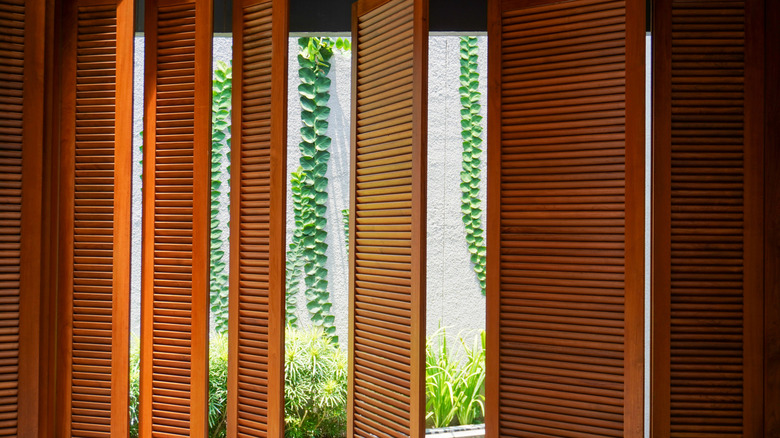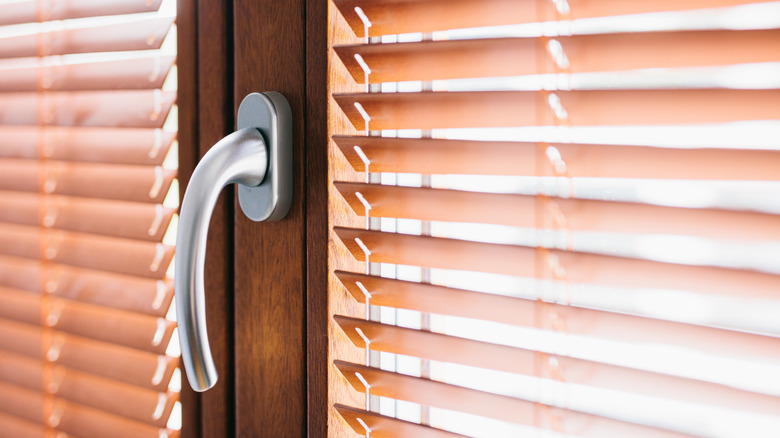Is Teak Wood A Good Choice For Your Window Treatments?
If you're in the market for a window treatment that's timeless and complements today's home decor, consider using one of the most stylish and resilient woods out there: teak. Scientifically named Tectona grandis, teak wood's grain structure and natural oil content make it an excellent option for both indoor and outdoor use. It has a tight grain, meaning its grain pattern is close together, creating a dense, sturdy hardwood. On the Janka hardness scale (a ranking that measures how much force is required to damage a type of wood), teak has a rating of 1,155 pounds-force (lbf), which is slightly harder than English Oak.
The oils in teak only add to its durability. Its high natural oil content, especially silica oil, makes teak water-resistant, so teak window treatments are less likely to warp or crack, even in the bathroom or outdoors. To use the fancy term, teak has a low shrinkage coefficient, which means it won't significantly change size when it's exposed to moisture. The natural oils also make teak resistant to decay, fungus, and termite infestations. With proper care, teak can last 50 to 70 years, so your window treatment will rarely (if ever) need to be replaced.
Benefits and drawbacks of teak window treatments
Teak wood's limited availability, high durability, and slow growth rate all make it a more expensive wood than most hardwoods, so it's probably not a budget-friendly window treatment option for everyone. The price range of teak per board foot can be two to three times that of mahogany, for example. But if you're looking for window treatments that are as long-lasting as they are beautiful, the investment may be worth it.
Overall, teak is a highly effective wood for window treatments. It can withstand exposure to temperature change, weather, and sunlight, which a window treatment will definitely experience. Its oils also make it low-maintenance: The wood doesn't need to be treated, but if you don't, it will eventually weather into a charming silvery-gray color. If treated, teak will maintain its warm golden-brown coloring for much longer.
If you want to make sure you're getting all the benefits of teak, look for Grade A or B wood, not Grade C that comes from sapwood or immature trees and is much less resilient. There are also a few hidden disadvantages of teak wood furniture including unsustainable harvesting practices across much of the industry, so eco-conscious buyers may want to look at alternatives like greenheart wood, shorea, or cherry wood.

